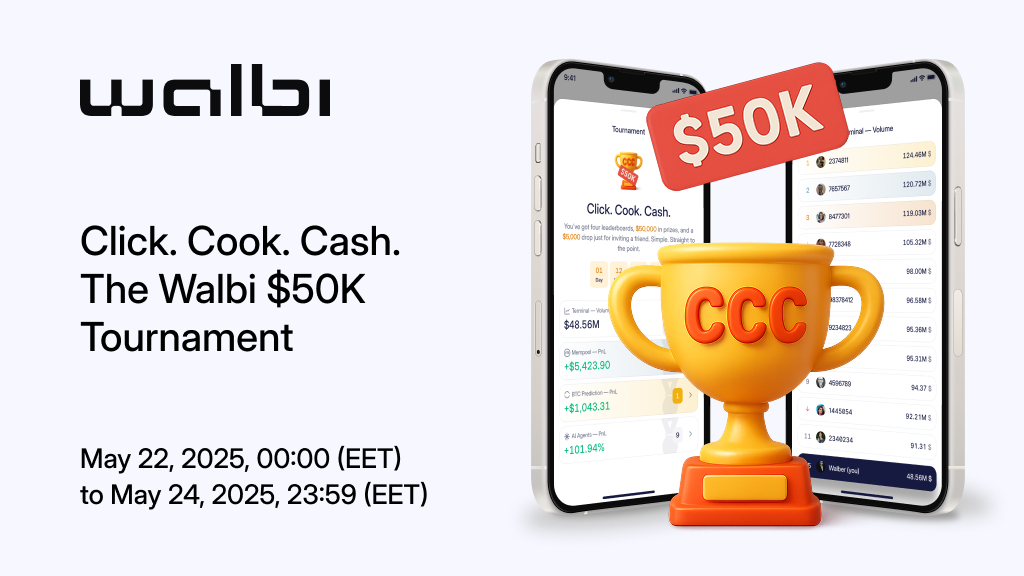Cryptocurrency is a relatively new digital asset that’s quickly grown in popularity and value worldwide. There are many ways to participate in this new digital economy but one of the most popular opportunities is cryptocurrency trading.
“What is crypto trading again?”
Crypto trading is when you buy and sell crypto strategically to make a profit. Anyone with a stable Internet connection and a smartphone or laptop can get started in cryptocurrency trading! You don’t even need a minimum budget, or spend hours monitoring your positions.
However, having knowledge and using the right cryptocurrency trading strategies is incredibly important.
If you don’t understand how to:
- analyze,
- research,
- and plan your trades,
you’ll lose out on gains.
This is especially true for crypto, which has a more volatile market history. While this means the potential for returns is astronomical, the potential for losses is also a risk.
“So how do I make money trading cryptocurrency?”
We’re glad you asked! In this comprehensive, two-part lesson, you’ll learn about the following:
- Technical analysis and how to use it
- Fundamental analysis and how to use it
- How to master risk management when trading crypto
- Basic cryptocurrency trading strategies
- Advanced cryptocurrency trading strategies
- Bonus tips to successfully trade crypto
Ready? Let’s begin!
Introduction to Technical Analysis
Technical analysis involves using multiple technical indicators to assess the market’s performance.
“What is a technical indicator?”
A technical indicator is a pattern-based signal. Traders look at these patterns to try to predict future price movement.
The largest technical indicator is a cryptocurrency’s historical price data, showing how that asset performed in the past. A crypto trader can use these indicators to more accurately predict the crypto’s future performance. By doing so, they can create both a short-term and long-term trading plan that takes advantage of price movements.
Key terms to know
Below are some key terms to know when conducting technical analysis along with a definition of these terms.
Candlestick Charts

Candlestick charts (or patterns) are another type of technical indicator (pictured above). Candlesticks are an especially useful indicator, as they provide a snapshot that traders can analyze very quickly. These charts were first used in the 1700s by Japanese rice merchants, so they have an incredibly long and successful track record.
Each candle has a wax body (thick part) and a wick (the skinny part). The wax body represents the opening and closing price (within that period). The wick represents the lowest or highest price of that crypto, within the same period. Most candlestick charts are color-coded, with bearish candles in red and bullish candles in green.
Green candles have higher closing prices and lower opening prices. Red candles are the opposite. By identifying the candle’s patterns, traders can predict when the best time to buy into or sell out of the cryptocurrency.
Support and Resistance Levels

Support and resistance levels are another great technical indicator. Some charts will even highlight these levels for you. These levels are where the supply and demand of a cryptocurrency meet. Support levels will reflect where the crypto has more demand when an asset with a downward trend stops falling in price. On the other hand, resistance levels are where supply doesn’t match the demand. Prices will keep hitting an invisible ceiling until they eventually break through.
As evidenced by the photo above (the middle blue line), you can see if the price reaches above a resistance line or goes below a support line, then extreme volatility occurs.
PRO TIP! Extreme volatility offers a great profit opportunity when trading. So keeping an eye on key support and resistance levels are great way to maximize profits.
Moving Averages

The moving average convergence divergence (MACD) is two lines that move around a constant center. This center is the signal line, which represents the nine-day exponential moving average (EMA). We can think of this centerline as ‘zero’.
The MACD line (pictured above and represented in green and red) is the difference between the 12-day and 26-day EMA. When the MACD line crosses up over the center, the market is bullish. When it crosses down into lower numbers, the market is bearish.
“What do technical indicators indicate?”
All these technical indicators signal trends in the market. There are uptrends, which are when prices manage to hit new highs and higher ‘lows’. When you see charts that mark an upward diagonal line, it's usually pointing out an uptrend. Downtrends are showing the opposite effect. Lastly, sideways trends called consolidations occur when prices swing back and forth within a narrow range.
Introduction to Fundamental Analysis
Fundamental analysis focuses more on assessing the principles of trading crypto and formulating a strong plan. Traders can conduct fundamental analysis by diving into all the available information about a cryptocurrency.
With fundamental analysis, researchers think about
- what the cryptocurrency’s use cases are,
- its developer team’s goals and beliefs,
- and its intrinsic value.
You can use a mix of technical indicators along with qualitative data in your research for this analysis.
Fundamental Analysis: white papers and roadmaps
A great place to start for some crypto projects is white papers. White papers are shorter reads (usually anywhere from six to twenty pages) but are incredibly detailed and information-dense. When a cryptocurrency launches or adds new updates, you can read about the developers’ reasoning. Roadmaps are a similar type of document that outlines the short-term and long-term objectives the team holds for that cryptocurrency.
Consider whether that project has achieved the goals in its roadmap, or if it’s currently making progress towards them. It should be easy for you to find a project's roadmap. Walbi, for example, displays a detailed roadmap on the website’s landing page. This information is crucial for traders to understand the potential of their investment.
Fundamental analysis: advisors and experts
Gaining insight from experts in cryptocurrency or asking for advice from consultants is also beneficial. Their experience can provide you with a new perspective. They can provide real-life examples where people gained practical value and usage (or didn’t) from certain crypto.
Armed with this information, you can form an opinion of the crypto’s value and compare its actual price. Crypto exchanges that encourage their community to discuss and connect, like Walbi, are valuable for this reason. Walbi Discord-based community helps to guide their new users in their journey.
PRO TIP! Try Walbi Lighthouse to get AI-driven insights for your crypto trades.
Mastering Risk Management
Having a strong technical and fundamental analysis of a cryptocurrency can help you create a trading plan. Adding risk management tools and techniques is the final step to forming your strategy. It always pays off to prepare for the uncertainties, and there are multiple tools you can try out and add to your plan.
Position Sizing
One is position sizing, where a trader compares the size of their position to the rest of the portfolio. The position is the value and duration of the investment. The portfolio is your total collection of investments or trades. To gain the best position size, a trader can weigh up the price of a certain amount of crypto versus how much they may lose.
Risk-to-reward Ratio
Using this technique is also called the risk-to-reward ratio. This is when you divide the amount you could profit by the amount you could lose. For example, let’s say you have a total budget of $100 and can afford to risk losing $50. With the right cryptocurrency, you could also sell at $200 and make $100 profit. You can then buy $100 of cryptocurrency that you feel confident won’t lose up to 50% of its value.
Take-profit and Stop-loss Orders
These tools are best done before you buy or sell. There are also tools you can set up to execute after you buy into a position. Take-profit and stop-loss orders are top examples. These market orders will only go live after certain conditions are met, which you can customize. Take-profit orders are usually set to execute at a higher price.
Let’s say you bought one token of crypto for $100, and expect it to continue an uptrend. You can set the take-profit order for $150. Once it reaches that price, a sell order for your crypto will automatically execute.
A stop-loss order is set at a lower price. Using the same example, you could set the order to execute only if the price reaches $80. This price might be just below a support level. Remember that if a cryptocurrency breaks through a support level, it might indicate a downtrend. The stop-loss order will automatically put your crypto up for sale and prevent you from losing too much.
Simply Cryptocurrency Trading Strategies
Beginner crypto traders may not have as much time or energy to dedicate to their trading. Don’t worry - no matter your lifestyle, availability, or financial goals, there’s a strategy perfect for you. Many beginners get started with day trading, a short-term strategy that requires fewer hours. This strategy also makes use of the market’s volatility, using price fluctuations to turn multiple smaller profits.
Day Trading
Using stop-loss and take-profit orders in conjunction with the day trading strategy is common. These orders allow traders to set up their entry and exit points ‘’hands-free’’. Since this strategy uses multiple quick trades within hours, traders with a smaller budget can excel in it.
Some exchanges, like Walbi, help their day traders with advanced software. Walbi uses artificial intelligence to reduce risk and increase efficiency with monitoring all the latest crypto news and trends. This makes day trading all the more convenient and - hopefully - profitable.
Swing Trading
Swing trading also makes use of price fluctuations, but applies more knowledge and analysis. Some swing traders don’t even consider themselves traders, but investors. Investors can hold swing trading positions for a longer time than day trading ones, too. Swing positions can last up to a few days, while day trade positions can last just hours.
Position Trading
Position trading is a long-term strategy, where traders hold positions for several months. The idea behind this strategy is keeping the asset for longer will allow its value to grow bigger. Until the value increases significantly, traders will hold their position.
Scalping
Scalping is another strategy that takes advantage of price movements. It’s another short-term strategy where traders buy and sell within minutes. Traders can use discretionary scalping, which is more reactive and spontaneous, and based on real-time movements. They can also use systemic scalping, where they’ve pre-planned entry and exit points.
Arbitrage
Arbitrage makes use of price differences in different markets. Due to economic or legislative factors, some exchanges or countries will have differing prices. Arbitrageurs will make use of these inefficiencies to turn a profit. While most arbitrage opportunities are short-lived and sporadic, some channels are well-known.
One example is the Kimchi Premium, which exists due to South Korea’s regulations on international cryptocurrency exchanges. Some traders will use advanced software to automatically detect market inefficiencies. Scalping requires quick action, as most arbitrage openings will self-level and disappear quickly.
Market Making
Lastly, the market-making strategy aims to increase liquidity in investments. Market makers will fill up their public order book, displaying multiple trades. This guarantees that whoever buys from or sells to the market maker will get a specific order. Market making is very useful as singular market orders are less stable. You might put out a sell order for $100, but end up only getting $90. This is due to price fluctuations. Market makers will strategically set up their buy or sell bids to gain a profit.
To be continued!
Wait for next week’s article to finish Lesson 3: Proven Cryptocurrency Trading Strategies
Complete the task below and win 300 XP
Put your knowledge to the test and win a 300 XP reward! How? Just click the button below and complete the Walbi Academy task based on this lesson




